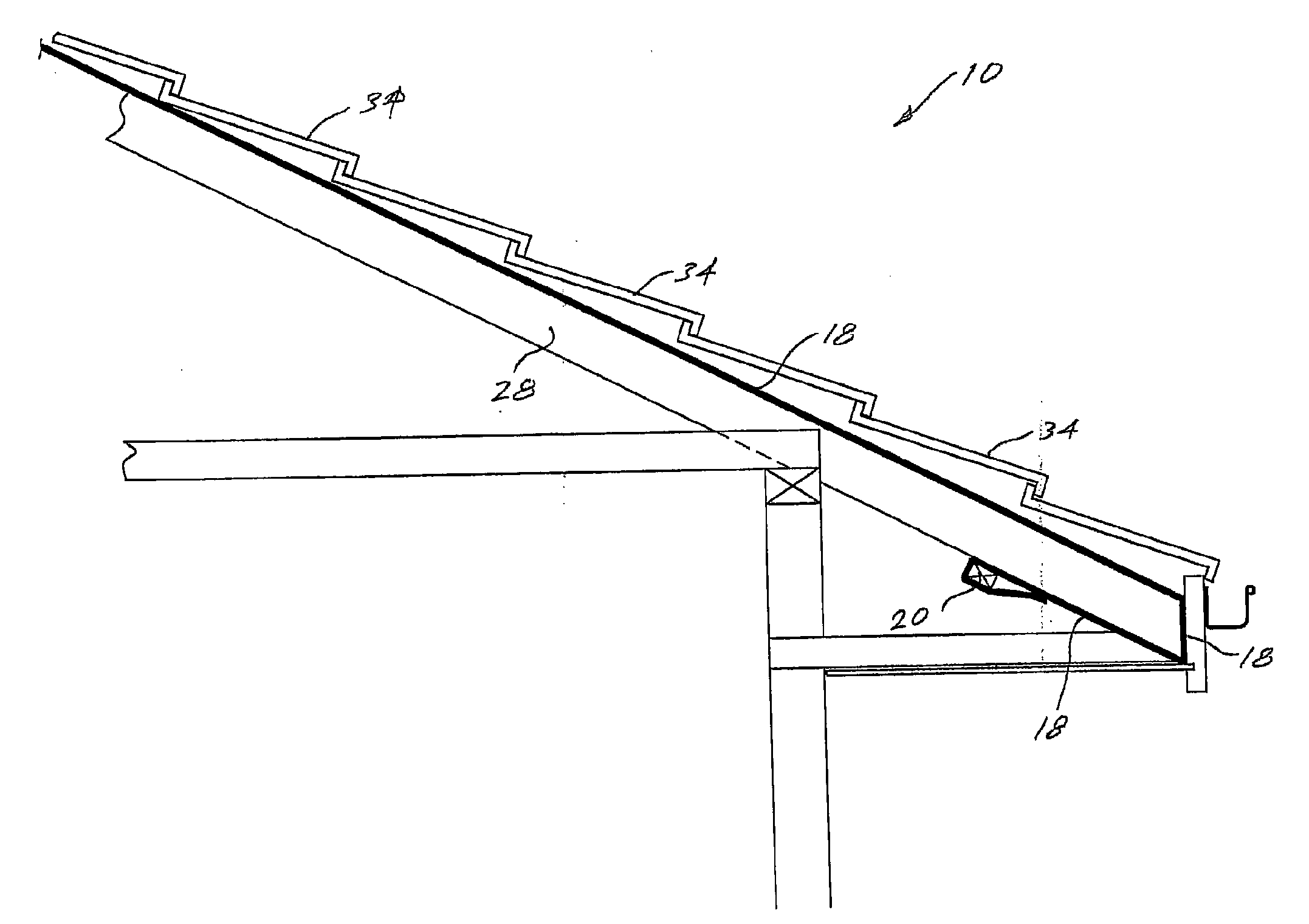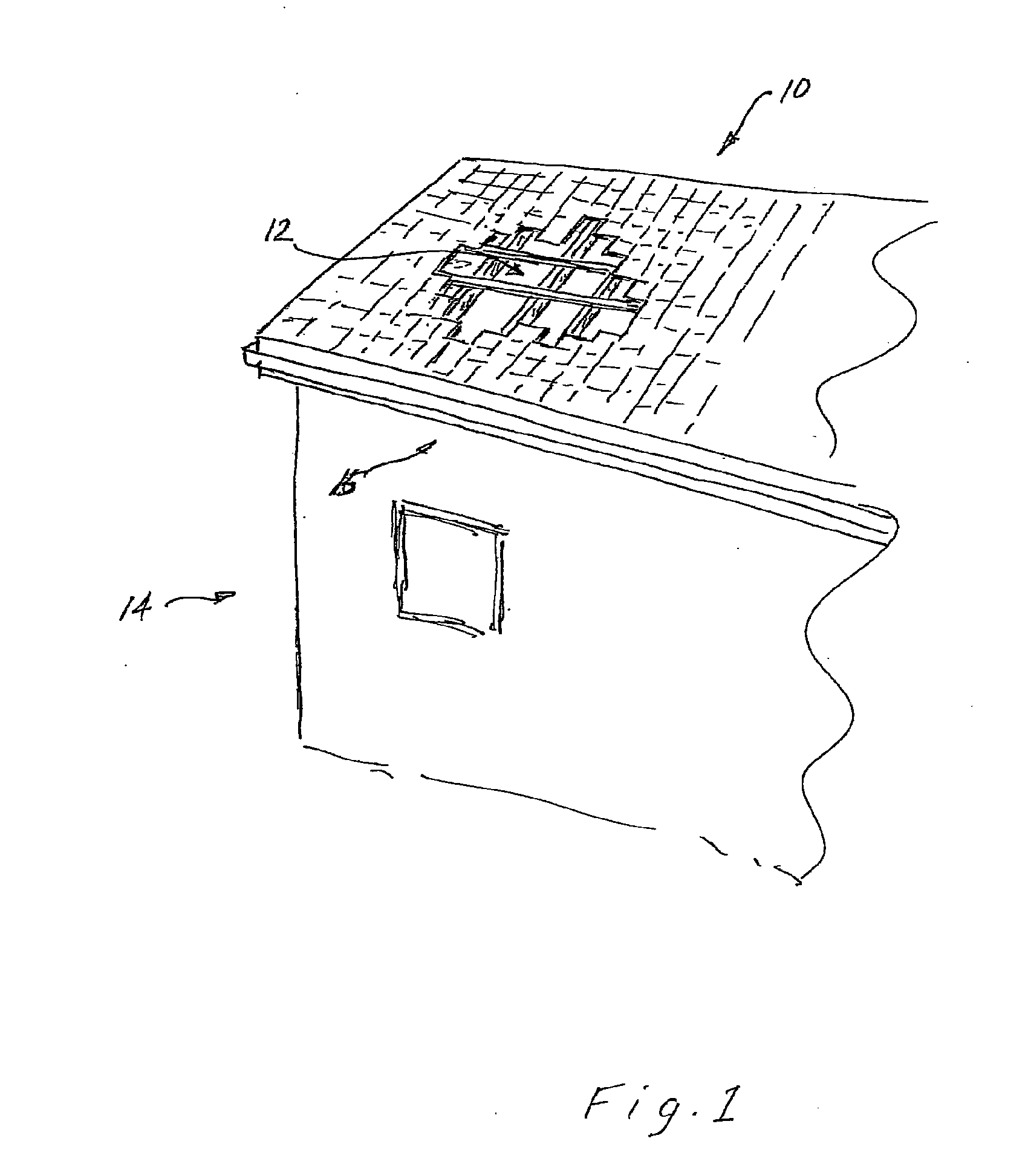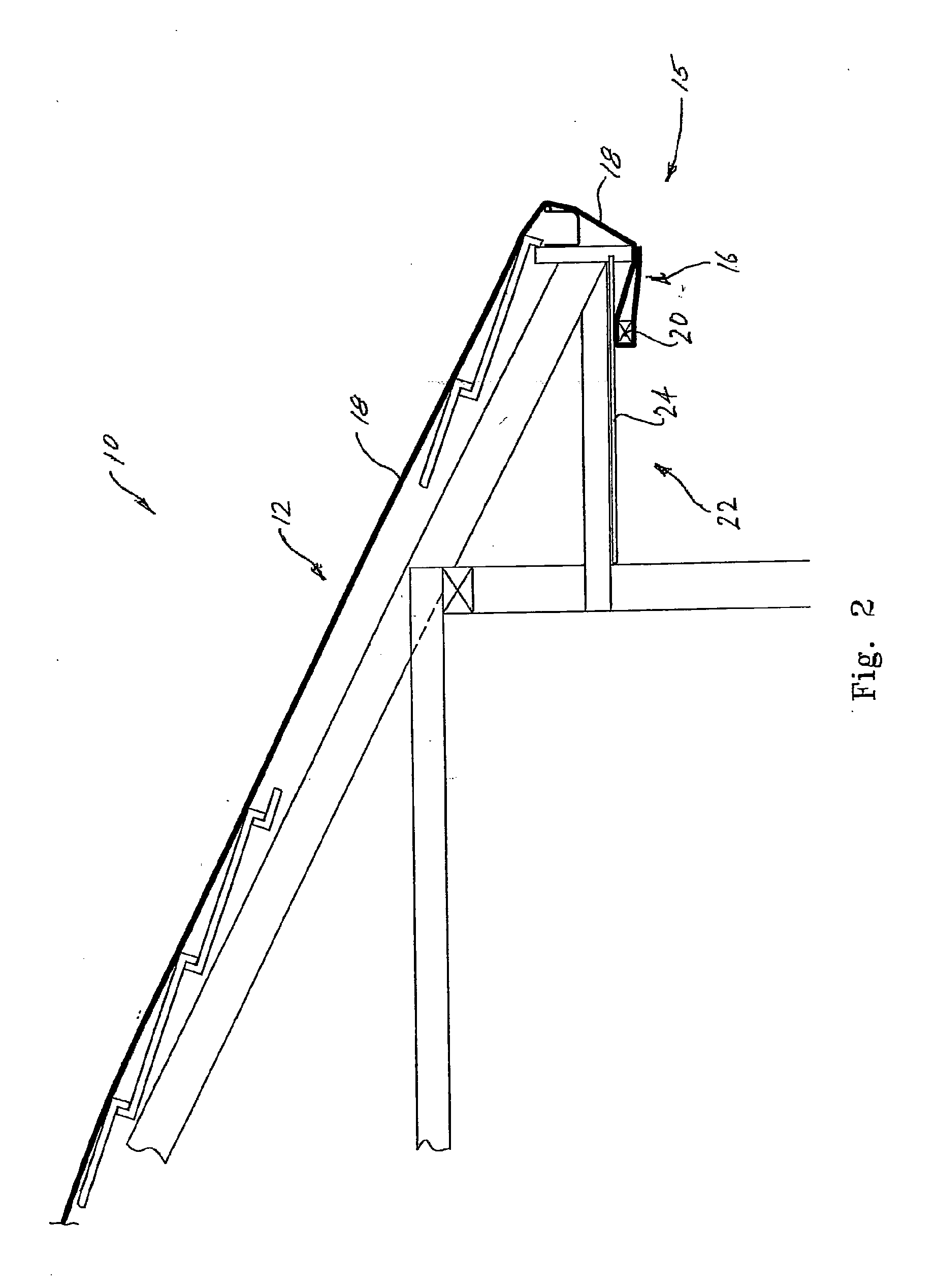Roof and wall cover system
- Summary
- Abstract
- Description
- Claims
- Application Information
AI Technical Summary
Benefits of technology
Problems solved by technology
Method used
Image
Examples
first preferred embodiment
[0091]With reference now to FIG. 1, typical damage to a tiled roof 10 of a building 12 may include the loss of a number of tiles 12 due to a high wind shear event, leaving the building 14 open to the ingress of water. Water ingress may also occur if tiles are cracked for example from heavy hail impact or falling trees or branches. Emergency temporary repair is provided by the roof cover system of the invention by applying the above described film over that portion of the roof which has sustained damage.
[0092]If required, sharp edges protruding from the roof surface may first be covered with suitable wadding and adhesive tape to prevent possible tearing of the film during application.
[0093]The extent of roof to be covered is measured and the most suitable available width roll of the heat shrinkable film selected. Film is cut to one or more lengths sufficient to extend from one edge of the roof to an opposite edge. With reference to FIG. 2, a trailing edge of a length of film is mecha...
second preferred embodiment
[0099]In a second preferred embodiment of the invention, a damaged section of a roof to be temporarily protected prior to permanent repair, is again covered by a heat shrinkable film. In this embodiment however, the method of application is different.
[0100]Instead of attempting to apply individual lengths of film, attaching a length at a first end to the eaves at one side of the roof, stretching the length over the roof to be attached at the eaves at the opposite side, and taping the edges of adjoining lengths of film together, the method of this embodiment, with reference to FIG. 5 is as follows:[0101](a) the location of the damaged section 12 of roof 10 is assessed in relation to the nearest opposing edges of the roof,[0102](b) the length of film required to extend between the opposing roof edges is estimated, allowing for overhang and fixing requirements,[0103](c) the width of the damaged area is ascertained and the number of lengths of the available film required to cover and ov...
third preferred embodiment
[0108]In a third preferred embodiment of the invention, a heat shrinkable film may be applied to the roof framing of an uncompleted building. In this embodiment as shown in FIG. 3, the heat shrinkable film 18 is applied after the roof framing is complete but preferably prior to the attachment of facia boards.
[0109]In this embodiment also, lengths of film are prepared from suitable width rolls sufficient to stretch from one side of the roof to an opposite side. In this case the trailing and leading edges of the length of film are preferably attached by means of battens 20 fixed to the underside of the outer ends 26 of rafters 28, that is between the outer ends of the rafters 28 and the wall frame 30.
[0110]The heat shrinkable film 18 in this embodiment, is provided with a heat reflecting upper surface 32 so that the film 18 forms a permanent sarking layer beneath the roofing cladding, either tiles 34, as shown in FIG. 4, or metal sheeting. Thus in this embodiment the heat shrinkable f...
PUM
| Property | Measurement | Unit |
|---|---|---|
| Length | aaaaa | aaaaa |
| Volume | aaaaa | aaaaa |
| Area | aaaaa | aaaaa |
Abstract
Description
Claims
Application Information
 Login to View More
Login to View More - R&D Engineer
- R&D Manager
- IP Professional
- Industry Leading Data Capabilities
- Powerful AI technology
- Patent DNA Extraction
Browse by: Latest US Patents, China's latest patents, Technical Efficacy Thesaurus, Application Domain, Technology Topic, Popular Technical Reports.
© 2024 PatSnap. All rights reserved.Legal|Privacy policy|Modern Slavery Act Transparency Statement|Sitemap|About US| Contact US: help@patsnap.com










